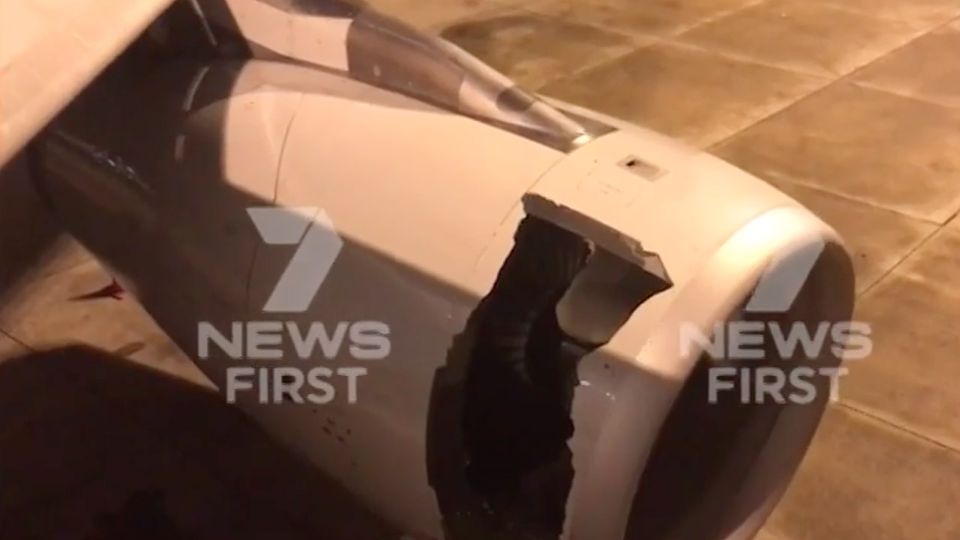Investigations are underway into what caused a gaping hole in the engine inlet cowling of a China Eastern jet on Sunday night.
The Shanghai-bound Airbus A330-200 was climbing out of Sydney after an 8.30pm take-off and was at about 5000ft when the crew reported a problem with the engine cowling.
“For your information, maybe you would check this runway — 34 Left,’’ the pilots told air traffic control. “We just had (a) visual check of the engine number one and the cowling case has broken,’’
Passengers reported hearing a noise as the aircraft took off but no debris was found on the runway.
China Eastern said the Airbus A330, operating as Flight MU736, encountered an unspecified engine problem after takeoff from Sydney Airport to Shanghai on Sunday night.
“The crew observed the abnormal situation of the left engine and decided to return to Sydney airport immediately,’’ the airline said in a statement. “All passengers and crew members were landed safely. They were then arranged accommodation by China Eastern Airlines. ‘’
The airline said passengers on the affected flight had been accommodated on other China Eastern flights or other airlines.
“The returned aircraft is currently under investigation at Sydney airport,’’ it said.
The damage to the cowling is in front of the fan and other moving parts of the engine and is similar to that suffered by an Egyptair A330 also powered by Rolls-Royce Trent engines on May 15.
According to The Aviation Herald website, the crew of the Egyptair plane with 211 people on board aborted a take-off after an engine failure.
The problem caused a large hole in the cowl at the engine inlet on the left-hand engine which Egyptian safety authorities said involved an uncontained engine failure.
The Sydney aircraft may also have hit something or there could have been a structural weakness in the inlet cowling material itself.
The inlet cowling comprises the front third of the engine nacelle and is largely made of composite materials by aerospace company Bombardier.
European safety authorities in 2011 issued an airworthiness directive requiring inspections of Trent 700 air intake cowls after two operators reported extensive damage as a result of the collapse of acoustic panels in the engine, likely due to disbonding.
“This condition, if not detected and corrected, could lead to the detachment of the engine air intake cowl from the engine, possibly resulting in ingestion of parts by, and consequence damage to, the engine, or injury to persons on the ground,’’ the European Aviation Safety Agency said.
The US Federal Aviation Administration in 2012 issued an AD warning of cracking of air intake cowls on Rolls-Royce Trent engines involving fractured thermal anti-icing tubes. It said the AD was aimed at preventing “degraded structural integrity’’.
However, engine manufacturer Rolls-Royce believes it is too early to speculate about any connection to other incidents.
A Rolls-Royce spokesman told AirlineRatings: ‘We are aware of the incident and will be working closely with relevant partners to understand the cause of the issue.”
Twin engine aircraft can safely fly on one engine and engine failures, although often spectacular, have become increasingly rare in modern jetliners.
























